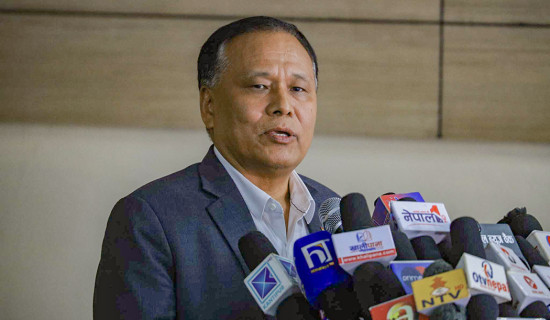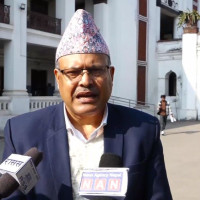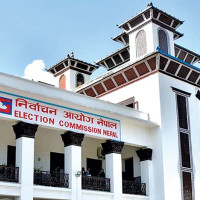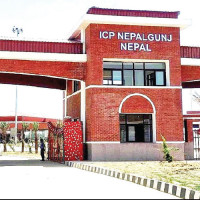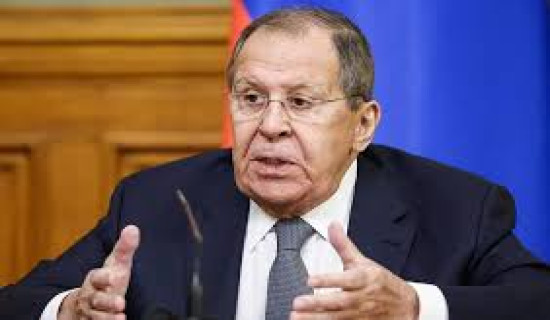- Sunday, 28 December 2025
Make TRC Effective In Its New Setup
Truth and Reconciliation Commission (TRC), among others, is poised to take off in its new incarnation. Prime Minister KP Sharma Oli's meeting with Nepali Congress (NC) apex leaders to discuss the TRC issues the other day is indicative of the fact that the key political stakeholders are committed to thrash out the outstanding issues and resolve the transitional justice (TJ) imbroglio. Moreover, the new panel, which recommends that potential functionaries execute the TJ mandates of the TRC institutions, is engaged in discharging its assignments in an accelerated way. This shows that the long-pending TJ issues will be addressed without any let-up or hindrances. Not very long back, the government had set up a commission to select the key functionaries for the TJ commissions through an open selection process, which was a very good start in this respect.
However, there had been a huge disenchantment over the proposed nominees, alleging that the list of persons that was made public would not be able to meet the expectations of the conflict victims and other stakeholders. The persons closer to one or the other political party would not be competent and credible enough to undertake the onerous challenges of the TJ processes. Therefore, the TJ commissions likely to be reconstituted should be composed of independent and competent persons who can inspire and command trust across the divides. In the past, the commissions failed to deliver because of the bickering and divisions within the bodies, and also for want of support of the government.
Results
The first chairperson of the commission, Surya Kiran Gurung, could not deliver as expected for two reasons. First, the party loyalist in the commission, according to him, did not lend needed support to him. Second, the government was not responsive enough to provide basic resources and logistics to the body. The second commission, headed by advocate Ganesh Datta Bhatta, also did not produce results because of one or other reasons. To look back, the notion of the Truth and Reconciliation Commission (TRC) was proposed in 2006 in Nepal following the signing of the Comprehensive Peace Accord between the state and Maoist rebels. The notion was attempted to translate into a reality in 2013 when the law for the same was endorsed by the then Constituent Assembly that was also mandated to act as the national legislature, apart from carrying out the responsibility of authoring the new democratic federal constitution.
The TRC statute was heavily scrutinised considering the major flaws associated with the possibility of amnesty for those alleged to have committed the heinous crimes amounting to gross violation of human rights. Eventually, the Supreme Court (SC) struck down certain provisions of the law and gave its verdict that the impugned statutory arrangements be reformed to comply with international human rights standards. Though the government constituted and reconstituted the commission at least twice in the past, both of the commissions formed had failed to take the imperatives of transitional justice to their logical end. In fact, the concept of TJ subscribes to the values of restorative justice in sharp contrast to the retributive and vengeful approach of punishing the criminals and wrongdoers.
Nepal’s Truth and Reconciliation Act draws partly from South African experimentation that was based on the principle of restorative justice, participation, and reparation. The TRC in South Africa was born of a spirit of public participation, as the new government headed by Nelson Mandela solicited the opinions of South Africans and the international community regarding the issue of amnesty as well as the issue of accountability concerning past violations of human rights and reparations for victims. Accordingly, TRC was formed and tasked with investigating human rights abuses committed from 1960 to 1994, including the circumstances, factors, and context of such violations, allowing victims and perpetrators the opportunity to tell their story. The commission dwelt on granting amnesty, constructing an impartial historical record of the past, and drafting a reparations policy.
Challenges
Nonetheless, the South African TRC was confronted by several challenges, as it was not accepted like in Nepal by all parties to the conflict. According to the reports, the top echelons of the military did not cooperate with the commission. Senior politicians in the former government and senior leaders in the security forces did not show their willingness to cooperate with the commission. Nevertheless, the hearings of the TRC attracted global attention, as it was the first commission to hold public hearings in which both victims and perpetrators were heard. At the same time, it laid the foundation for building reconciliation among all South Africans. Like in South Africa, Nepal should set an example for the world ensuring that impunity was not tolerated and those charged of gross violations human rights including killing of the innocent citizens, rape, and torture and so on were booked to justice.
The perpetrators should be held responsible for their criminal acts and wrongdoings. However, as in South Africa, utmost care needs to be taken to ensure that the retributive approach to inflict punishment on the perpetrators of petty crimes is shunned for the sake of national unity, peace, and reconciliation. The retributive and punitive approach may trigger a new round of conflicts, putting all the gains of democratic stability and peace at abeyance. South African peace expert Chris Spies, who knows Nepal’s peace process, ultimately cautions against any vindictive actions that could unsettle the process and destroy peace and harmony.
(The author is presently associated with Policy Research Institute (PRI) as a senior research fellow. rijalmukti@gmail.com)



